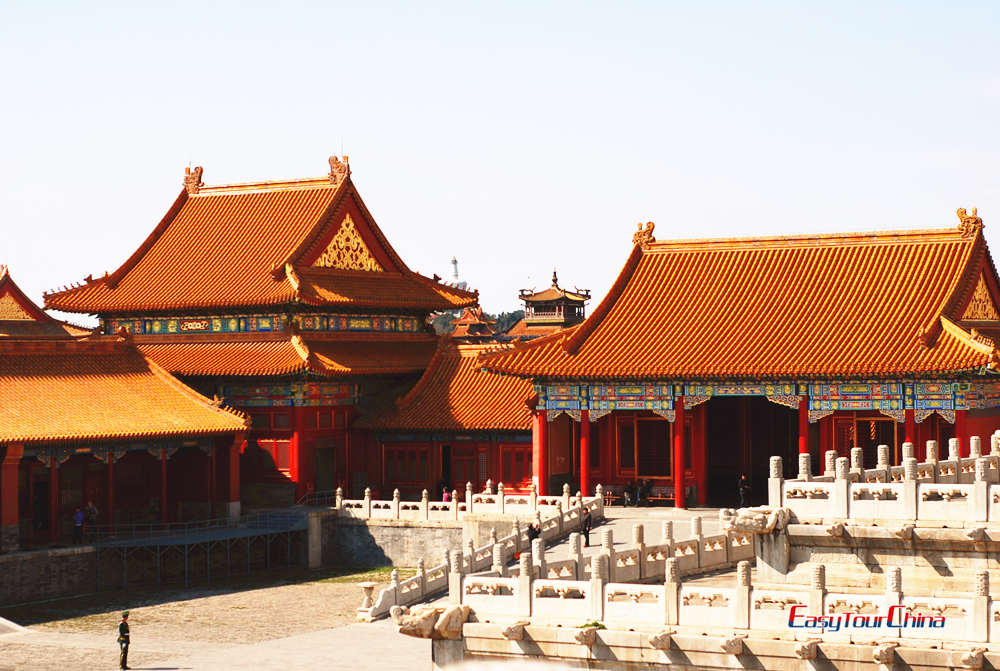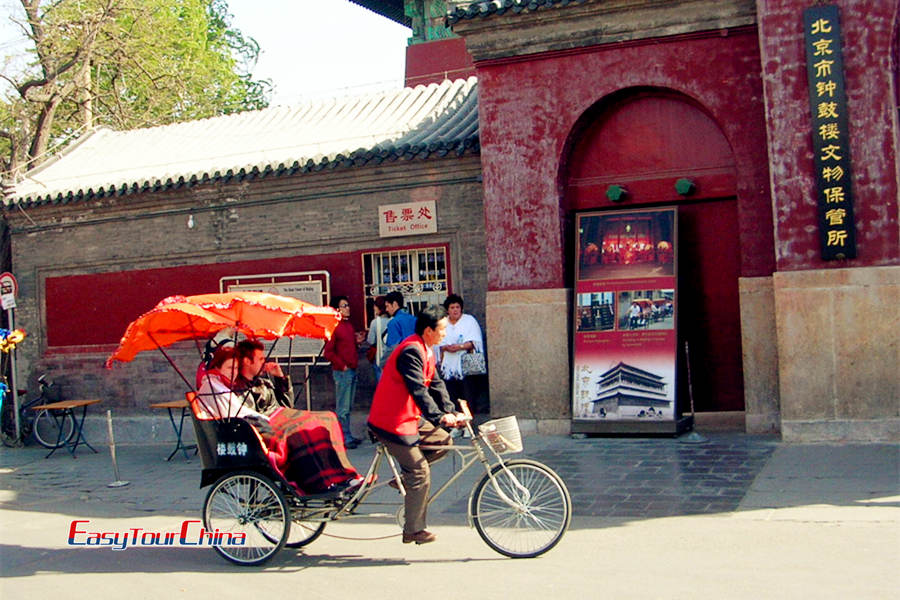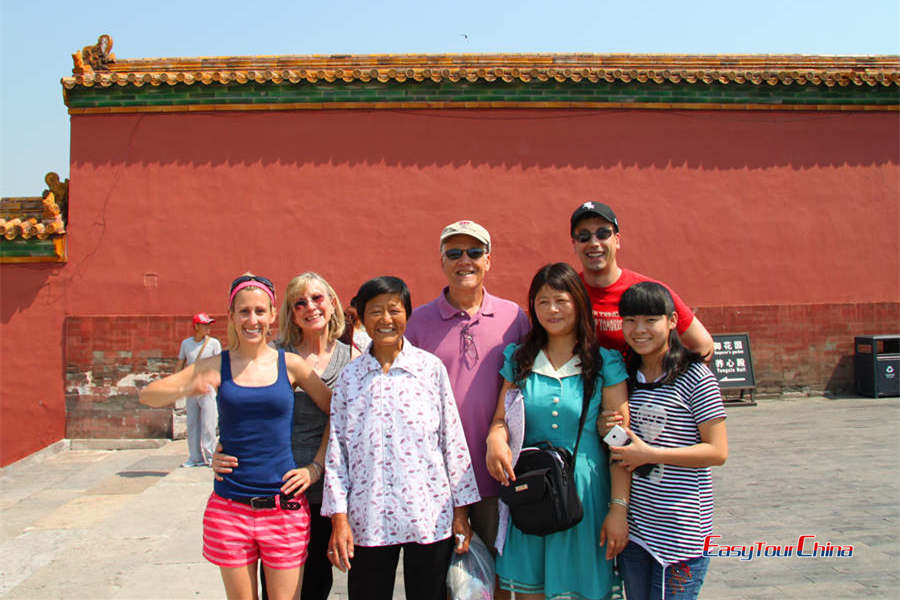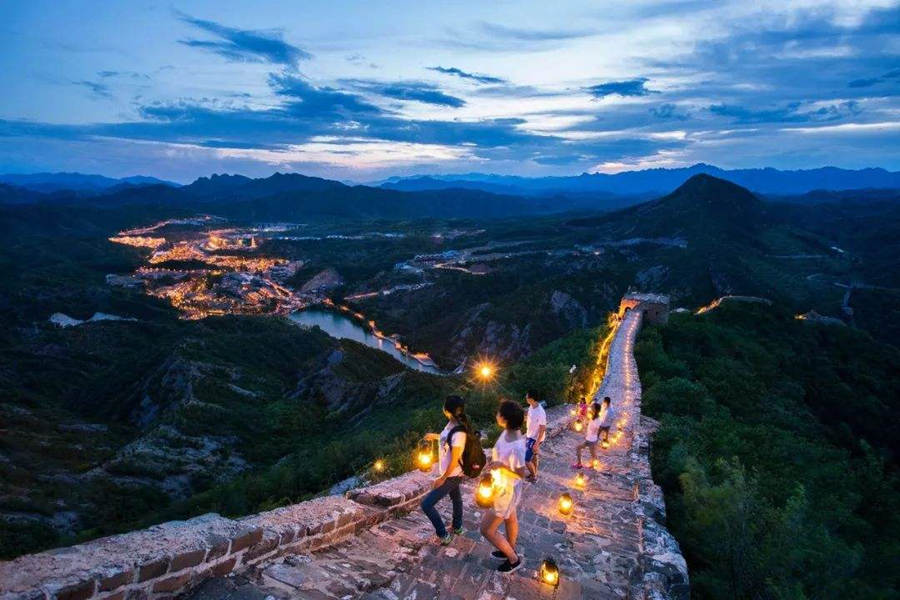Beijing Introduction – Facts, Shopping, Getting Around, etc.
Beijing is the capital of the People's Republic of China. It is not only the nation's political center, but also its cultural, scientific and educational heart as well as a key transportation hub. Beijing has served as a capital of the country for more than 800 years.

Beijing Facts
Location: Beijing is located on the western coast of China on the Pacific Ocean. Beijing stands at the northern tip of the North China Plain. Tian'anmen Square in the center of Beijing is situated at 39°56" North Latitude and 116°20" East Longitude. Beijing lies at approximately the same latitude as Philadelphia in the U.S. and Madrid in Spain . The city is 39% flat land and the other 61% is quite mountainous area. Beijing is surrounded by the Yanshan Mountains on the west, north and east while the small alluvial plain of the Yongding River lies to its southeast. Beijing faces the Bohai Sea, and the area is also called the Beijing Bay.
History: Peking Man appeared in the original place of Beijing about half a million years ago. It was built as a township more than three millenniums ago. Beijing was the ancient capital during 5 dynasties, and is currently the modern capital of China.
Area: Greater Beijing has an area of 16,808 sq km.
Time: Time used in Beijing and all over China is called Beijing Standard Time. It is 8 hours ahead of Greenwich Mean Time (GMT + 8), and 13 hours ahead of New York time.
Population: 21.536 million (December 2019), half of the people live on the outskirt of the city (out of the 5th Ring Road).
Ethnic groups: The permanent residents of Beijing come from all of China's 56 ethnic groups. The Han nationality accounts for 96.5% of the total. The other 55 ethnic minorities claim a population of more than 300,000, most of them are from Hui, Manchu, and Mongolian nationalities.
Agriculture: In 1994, the gross value of agricultural output reached 28.69 billion yuan (non-agricultural output value accounting for 79.5%). The gross value of rural industrial output accounted for 40.2% of the city's gross value of industrial output in 1994. The main cereals are wheat, corn, and rice. The total amount of grain output was 2,761 million tons, and per-hectare yield was 6,420 kilograms. There are 541 farms where each farmer is responsible for more than 6.6 hectares. Mechanization in agriculture has been basically realized in plain areas, and various kinds of bases can provide abundant sideline products.

Industry: Beijing's gross domestic product (GDP) reached 82.9 billion yuan in the first five months of 2000, up 12 percent over the same period of last year, with high-tech enterprises leading development, according to Beijing Youth Daily. From January to May, the added value of Beijing's industrial output was 6.35 billion yuan, up 18.8 percent over the same period of the previous year.
City Flowers: In the spring of 1987, delegates to the Sixth Session of the Eighth Municipal People's Congress, meeting in the Great Hall of the People, overwhelmingly approved the scholar tree and oriental cypress as the official city trees, the Chinese rose and the chrysanthemum as Beijing's official city flowers.
The rose, a Chinese native, has been cross-bred many times, but it still has half of the original Chinese strain. Known as Perpetual Spring, Monthly Red, Snow Challenger and Victorious, it is fast growing, regenerates easily and is graceful and long blooming (May to October). The chrysanthemum has many names and varieties. In Beijing potted chrysanthemums may be seen year round. They flower in summer and fall naturally but can be forced to bloom any time of year. During the Qing dynasty, there were 400 rare strains of chrysanthemum. Beijing's flora-culturists now boast more than 1000 varieties.
City trees: The stately cypress symbolizes the courage and strength of the Chinese people, their simple, hard working nature and their defiance in the face of aggression. This Plateaus Orientals, or Oriental Arborvitae, can grow as tall as 20 meters. Some of those in Zhongshan Park were planted as long as 1,000 years ago during the Liao Dynasty. The scholar tree is a symbol of good fortune, joy and well-being. Dating back to the Qin and Han dynasties Sophia Japonica were planted extensively at the Tang Dynasty Imperial Palace in Chang'an. At Beihai Park an ancient specimen in the courtyard of the Painters Corridor, is believed to have been planted during the Tang Dynasty, before 907. Another ancient scholar tree near the Broken Bridge in the Forbidden City is said to have been planted before 1125. Both are well adapted to Beijing's cold, dry winter, hot and dry summer, and alkaline soil.

Names of Beijing
Beijing, an ancient capital of China with a history of over 3,000 years, had more than 20 different names in different dynasties. These names have witnessed the historical changes of Beijing.
Names of Yan (燕)
The earliest name for Beijing was “Yan”, which originated from the neighboring Yan Mountain. The city of Yan was the beginning of Beijing, but was later destroyed and became the capital of the state of Yan during the Spring and Autumn and Warring States Periods, and was called “Yan Ji” (southwest of present-day Beijing). After the destruction of Yan in the 21st year of Emperor Qin Shihuang (226 B.C.), the county of Guangyang was established, with its seat still in Yan Ji. Youzhou, one of the nine ancient states, was first mentioned in the Book of History. From the Han Dynasty to the Fifth Dynasty, the county of Youzhou was established, with its seat in YanJi.
At the beginning of the Sui Dynasty, the state of Youzhou was changed to “Taku County”, with its seat in Yanji; in the first year of the Tang Dynasty (724), the state of Youzhou was changed to “Fanyang”, with its seat in Yanji, but in the first year of the Qianyuan Dynasty (758), it was changed to the state of Youzhou, with its seat still in the same place. In the first year of the reign of Liao Huitong (938), Youzhou was elevated to the capital of Youzhou, and the city was called Nanjing, also known as Yanjing. In the fourth year of Xuanhe of the Northern Song Dynasty (1122), Song and Jin jointly attacked Liao and captured Yanjing, the capital of Liao. Yenching returned to the Northern Song Dynasty and the “Yanshan” Prefecture was built.
Names of Jing (京)
Another category of Beijing names begin with or are related to “Jing”, including Rishita, Yudu, Chunming, Jingcheng, Nanjing, Wanping, Xizin, Zhongdu, Daxing, Dudu, Khanbari, Beiping, Beijing, Shuntianfu, Jingshi, and Jingzhao. The most distinctive feature of these names is “capital”, including “Nanjing”, “Zhongdu”, “Dadu”, “Khan Bali” and “Beijing”.
Nanjing was the secondary capital of the Liao Dynasty. "Zhongdu" was the capital of the Jin Dynasty, with its administrative center located in the southwest of present-day Beijing. Dadu was the capital of the Yuan Dynasty. In the fourth year of the Yuan Dynasty (1267), Kublai Khan built a new capital northeast of the Zhongdu of the Jin Dynasty. In the ninth year of the Zhiyuan era (1272), it was renamed "Dadu".
"Khan Balil" was the name given by the Mongols to Dadu during the Yuan Dynasty, meaning "Khan City", that is, the residence of the khan. Beijing was the capital of the Ming Dynasty and was built by Emperor Chengzu Zhu Di after he ascended the throne. As the capital, the name "Beijing" has been used since then. From the Qing Dynasty to the early years of the Republic of China, the name "Beijing" remained unchanged.
In modern times, Beijing used to be called Beiping. The name change from Beiping to Beijing took place in 1949. This name change marked the official founding of the People's Republic of China.
>> Recommended: 11-day China Ancient Capitals tour
Why Change from Peking to Beijing?
“Peking” is the old English name for Beijing, which is derived from an early romanization system created by foreign missionaries based on the Wittoma romanization of the time.The name was widely used internationally.
With the standardization and internationalization of the Hanyu Pinyin system, “Beijing” gradually replaced “Peking”. This change is not only more in line with modern pinyin standards, but also easier for international communication and dissemination.
On July 13, 2001, when then IOC President Samuel Marange announced that Beijing would be the host city for the 2008 Olympic Games, he said, “The city of Beijing!” The word “Beijing” , spelled in Hanyu Pinyin, replaced the word “Peking”, which had been commonly used by the international community.
Today, the name “Beijing” is used for international events, conferences and documents.
Top Things to Do in Beijing
The city has many places of historic interest and scenic beauty, including the Forbidden City - the largest and best-preserved ancient architectural complex in the world; the Temple of Heaven--where Ming and Qing emperors performed solemn rituals for bountiful harvests; the Summer Palace - the emperors' magnificent garden retreat; the Ming tombs--the stately and majestic mausoleums of 13 Ming Dynasty emperors; and the world-renowned and genuinely inspiring Great Wall of China. Large-scale construction has brought great changes to Beijing since the founding of the People's Republic of China in 1949 that adds more and more new attractions to the mysterious old city.
Explore the Old Beijing
The quadrangle courtyard in Beijing
The Beijing quadrangle courtyard is an inner courtyard-style residence formed by enclosing houses on the east, west, south and north sides. It was the main architectural form where old Beijingers lived for generations. Since the Yuan Dynasty officially established its capital in Beijing and began large-scale planning and construction of the capital city, the quadrangle courtyard emerged simultaneously with the palaces, government offices, blocks, alleys and hutongs in Beijing. The decoration, carvings and paintings of the quadrangle courtyard also reflect the traditional culture of Beijing.
Beijing Hutongs
The word “hutong” originally means “well” in Mongolian. Townspeople could not survive without wells, so wherever there were people living, there were wells, and “well” became a synonym for the place where people lived. After the Mongols established the Yuan Dynasty in 1267, they also brought this term to Beijing, which has a history of more than 700 years. In Beijing, every hutong has its own story to tell.
>> Explore 10 Most Famous Hutongs in Beijing
Peking Opera
Peking Opera has a history of nearly 200 years. Among the various art forms, the one that best represents traditional Chinese culture would be Peking Opera. Its creation combines the artistic excellence of dance, song, drama, pantomime, martial arts and poetry.
Temple Fairs in Beijing
Temple fairs are mostly held in the Lunar New Year. Various folk art performances, abundant Beijing-style snacks and folk crafts are the most important features. Rice-planting songs, stilt walkers, dry boats, lion dances, playing with steel forks, tiger sticks, and gongs and drums provide a unique experience.
Weather, Clmate and Best time to Visit Beijing
Climate: The climate in Beijing is of the continental type, with cold and dry winters, due to the Siberian air masses that move southward across the Mongolian Plateau. The summers are hot owing to warm and humid monsoon winds from the southeast bringing Beijing most of its annual precipitation. January is the coldest month and July is the warmest. Winter usually begins towards the end of October. The summer months, June to August, are wet and hot with about 40% of the annual precipitation. The autumn season from September to October is regarded the best time to travel to Beijing, with mild weather and beautiful nature. Nevertheless, if you visit Beijing in the off season, you may have better travel experience given that there is less crowds.
Shopping in Beijing
Whether you are shopping at international-brand shopfronts or looking for local bizarre antique markets and food streets, shopping in Beijing can be really fun. The most famous shopping malls and commercial streets and makets in Beijing include Wangfujing, Qianmen Street, Xidan, Sanlitun, Nanluoguxiang hutong, Xiushui Street and Panjiayuan Antique Market.

Nightlife
The modern and cultural Beijing offers a wide range of nightlife choices.
- Sanlitun and Houhai bar street for drinks, music and lively atmosphere
- The popular food streets such as Shichahai, Guijie, for authentic local snacks.
- The night markets – the hutong alleyways, wangfujing, etc.
- Fabulous night shows: Peking Opera, Shaolin Kungfu, acrobatics, etc.
- Dinner at patio restaurant to take in the cityscape by night
Getting to and around Beijing
Beijing Capital International Airport serves air routes to nearly 140 international destinations, making it the first choice of the gateway city for international travelers who travel to China. Furthermore, to meet the increasing passenger flow, Beijing Daxing International Airport is built and expected to be made into formal operation in September 30. From the airports of Beijing, or the high speed railway stations, you can go to other China destinations easily, such as Xian, Shanghai, Chengdu, etc.
The Capital of China, Beijing is very modernized, with convenient inner city transportation, such as subway, taxi, city bus, tourist bus, public bicycle…
Beijing Visa-Free Transit Policy
Beijing has implemented the new 144-hour transit visa exemption policy, which means passport holders from 53 countries with valid international travel documents and tickets to a third country (region) can choose to stay in Beijing, Tianjin and Hubei for up to six days/144 hours. Therefore, you need not to apply for a Chinese visa to take 3-day Classic Beijing Layover Tour.